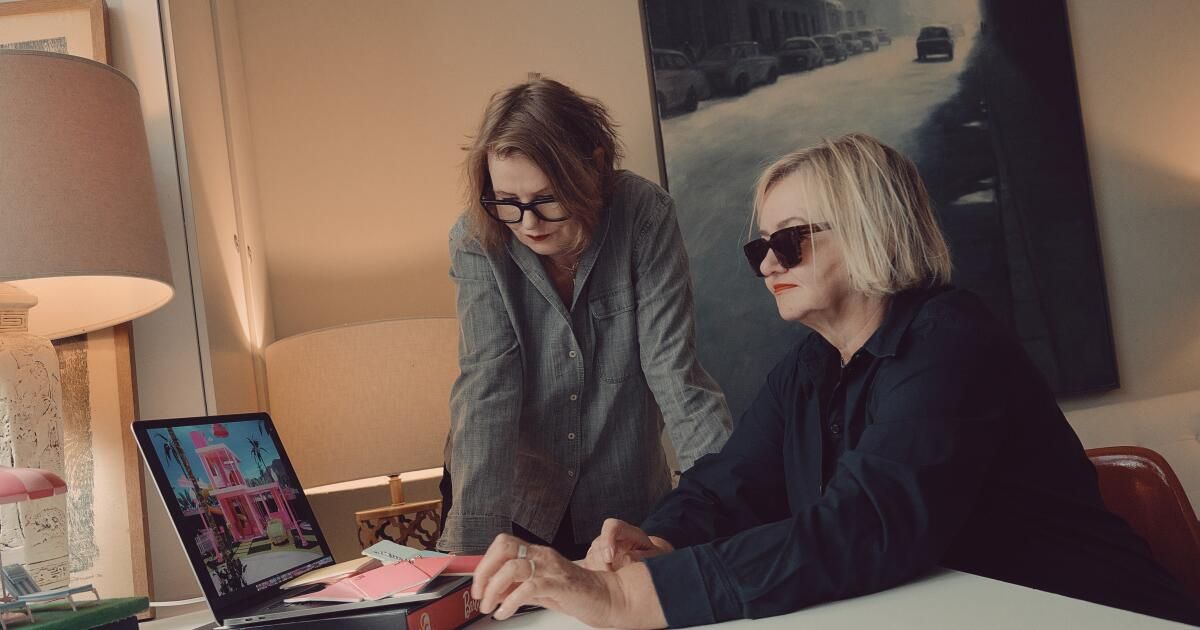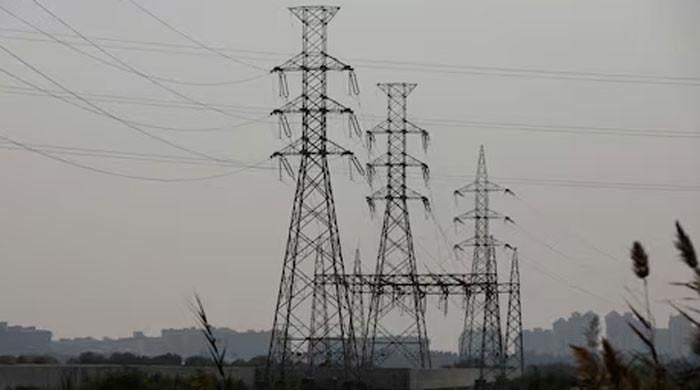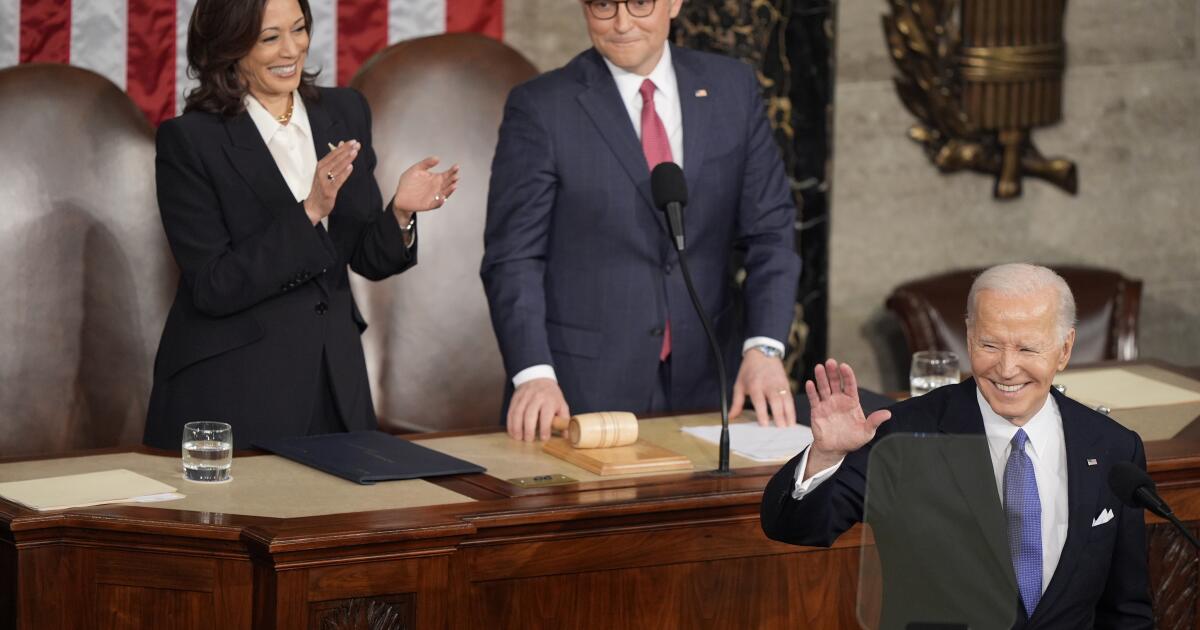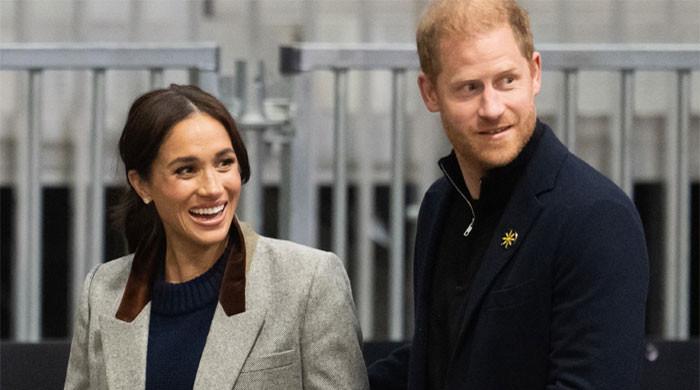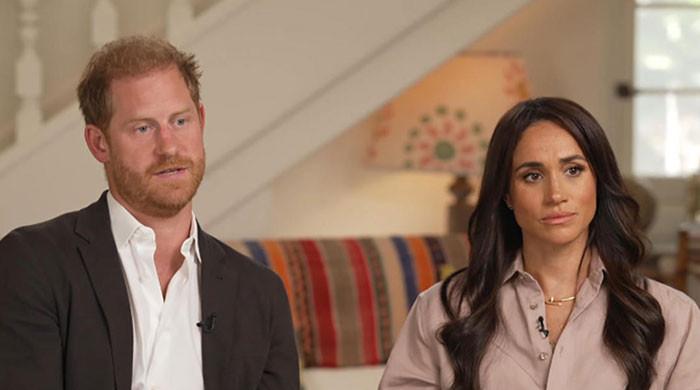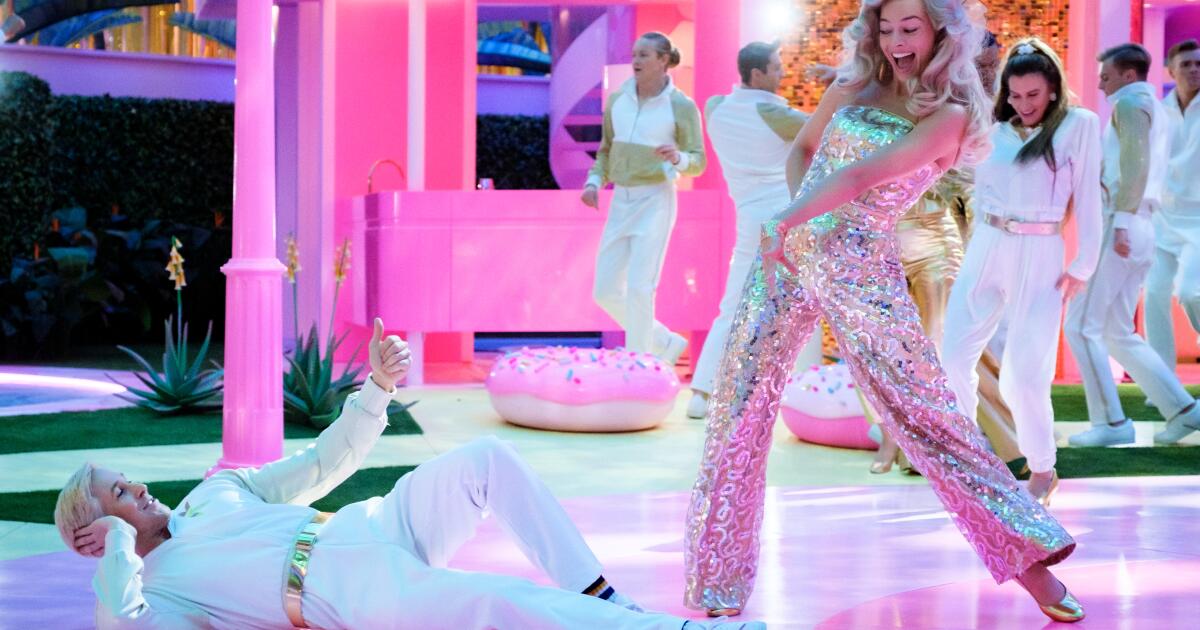Production designer Sarah Greenwood and set designer Katie Spencer were working from a snow-covered erupting volcano in Sicily during the production of Joe Wright's “Cyrano” when the possibility of “Barbie” arose. Her longtime collaborator, costume designer Jacqueline Durran, had recently wrapped “Little Women” with Greta Gerwig and had recommended that the writer-director consider Greenwood and Spencer to create the whimsical, colorful world of “Barbie.”
“Tom, Margot [Robbie]”The husband sent me the script and it was totally crazy,” Greenwood recalls. “There were no pauses in the scene. He broke the fourth wall constantly. It was 140 pages long. It was laugh out loud. I was like, 'Wow!'”
“It was an incredible stream of consciousness,” Spencer adds. “And it was a real page-turner. “It was so unexpected.”
A rose-tinted movie about Barbie isn't necessarily something the couple, six-time Oscar nominees for films like “Atonement” and “Darkest Hour,” would have ever considered. But the unconventional approach to storytelling and the chance to collaborate with Robbie and Gerwig were too compelling to pass up. They decided to approach it similarly to Wright's 2012 adaptation of “Anna Karenina,” where they built a singular world for the specific purpose of the story.
“It's not an exact resemblance to what you can buy in the store, but it has the atmosphere and the character,” says production designer Sarah Greenwood of the Dreamhouse created for Barbie (Margot Robbie) in the film. “greta [Gerwig] was smart [with the idea] “If we make some big things, like the hairbrush, then the audience will come along for the ride and then you'll start to believe it.”
(Images from Warner Bros.)
“It was incredibly exciting, and then completely terrifying,” Greenwood says. “Now you look at it and say, 'Oh, that's so simple.' But it was actually the hardest thing to achieve visually. What was it? How was it going to work? What is a world like this like? … Intellectually and philosophically it was one of the most difficult films we've ever made. “I know it sounds crazy, but it was.”
Greenwood and Spencer had many conversations with Gerwig about the look of the film. They needed to understand what evoked the essence of a toy. Barbie wouldn't use the stairs in her Dreamhouse because a child would simply pick up the doll. There would be no walls or running water. The pool, the sea and the sand would be made of plastic. Most importantly, the characters needed to feel believable within the world so that, once Barbie and Ken (Ryan Gosling) arrived in the more mundane Los Angeles, they would seem like strangers. That meant Barbie Land had to be a newly imagined place that also felt familiar.
“It's an interpretation,” Spencer says. “It is not a pure reproduction of something. It's not an exact resemblance to what you can buy in the store, but it has the atmosphere and character. Greta was smart [with the idea] that if we make some things big, like the hairbrush, then the audience will come along for the ride and then you'll start believing it. It is something Brechtian theatrical.”
Greenwood and Spencer, who had never owned a Barbie, bought a Dreamhouse for inspiration and looked at a recent book that compiled photographs of the various versions of the Dreamhouse from the past 70 years. They were inspired by '80s design, but focused primarily on mid-century style, which led them to Palm Springs, a major influence on the film's visuals. As the design process progressed, several Barbie Land rules solidified: no black and white, no chrome, no electricity, no external elements like the wind or the sun. They looked at over 100 shades of pink and finally settled on the 12 that were used on the sets, as well as some of the costumes.
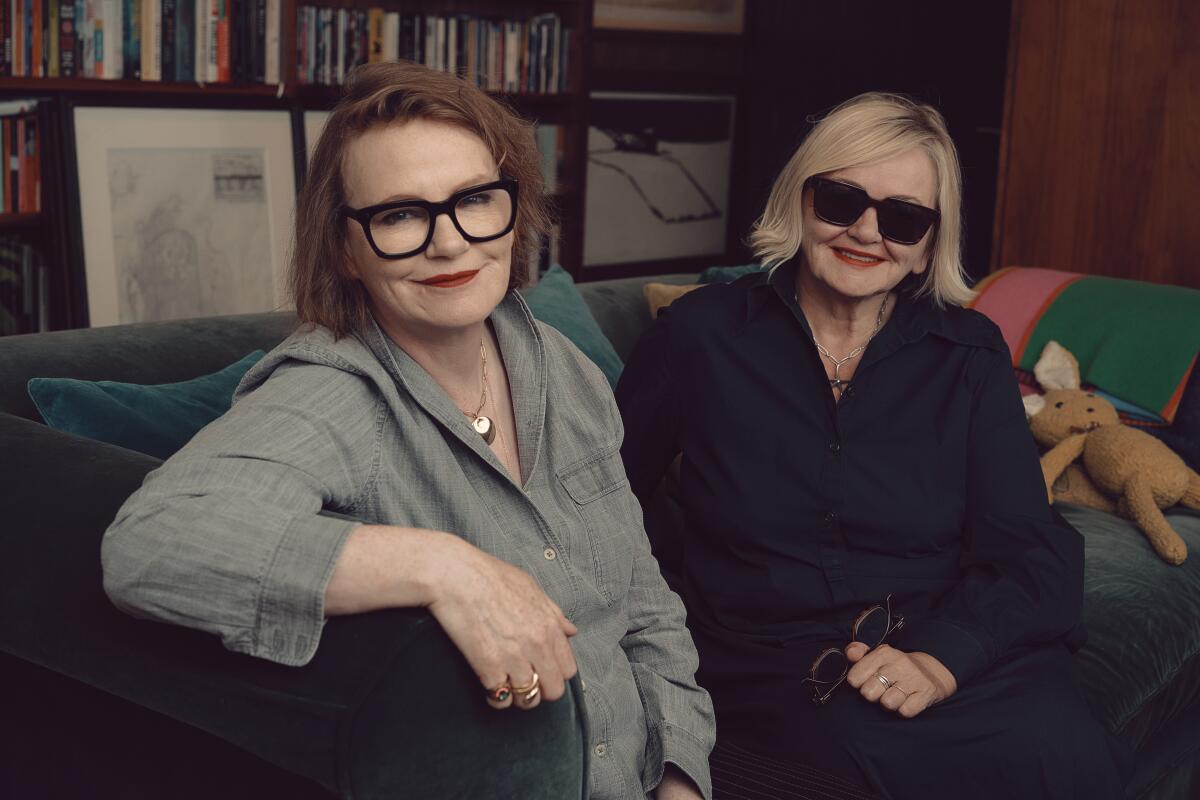
Production designer Sarah Greenwood, right, and set decorator Katie Spencer.
(Tom Jamieson / For The Times)
“Everyone used the same palette. Our set for Barbie Land had to have very pure colors,” says Greenwood. “The best thing about shooting the real world in Los Angeles was that we weren't tied to a color palette. The contrast between the real world and Barbie Land is quite extreme. It's almost like Los Angeles is monochromatic next to the color of Barbie Land, but it's not monochromatic at all.”
While the Barbie Land you see on screen looks perfect, it took some tricks to bring it to the world. Greenwood and Spencer built four Dreamhouses, including the one where Robbie's Barbie lives, on a London soundstage in front of an 800-foot-long, three-layer painted backdrop of sky and mountains. The houses were designed in a post-and-beam style and needed to be structurally sound, so the team built them with steel. They were also expanded to 23%, which is the exact ratio between a real Barbie doll and a Dreamhouse. The entire construction process of the cul-de-sac took almost five months.
“What Greta wanted was for everything to be as much on camera as possible,” says Greenwood. “So that she had that tangibility and toy quality. You are creating a world that children feel like they can touch. That became key for us and that it not be a big CGI festival. “We know what that looks like and it could have easily fallen into that, but it was very carefully avoided.”
The opening shots of Barbie Land and the shots of the row of shops along the boardwalk were created with miniatures. The VFX department then scanned the miniatures and stitched them all together, ensuring that the all-important quality of the toy was maintained in each scene. For the angular house where Weird Barbie (Kate McKinnon) lives, Greenwood looked to a variety of inspirations, including the hilltop house from “Psycho” and Antoni Gaudi.
“It was really magical because filmmaking takes you back to childhood and what I loved as a kid,” Spencer says. “And the appeal of this is that it really is like playing in your own toy box. In Barbie Land, everything seemed so real. “The pools were obviously plastic and paint, but people still walked around them.”
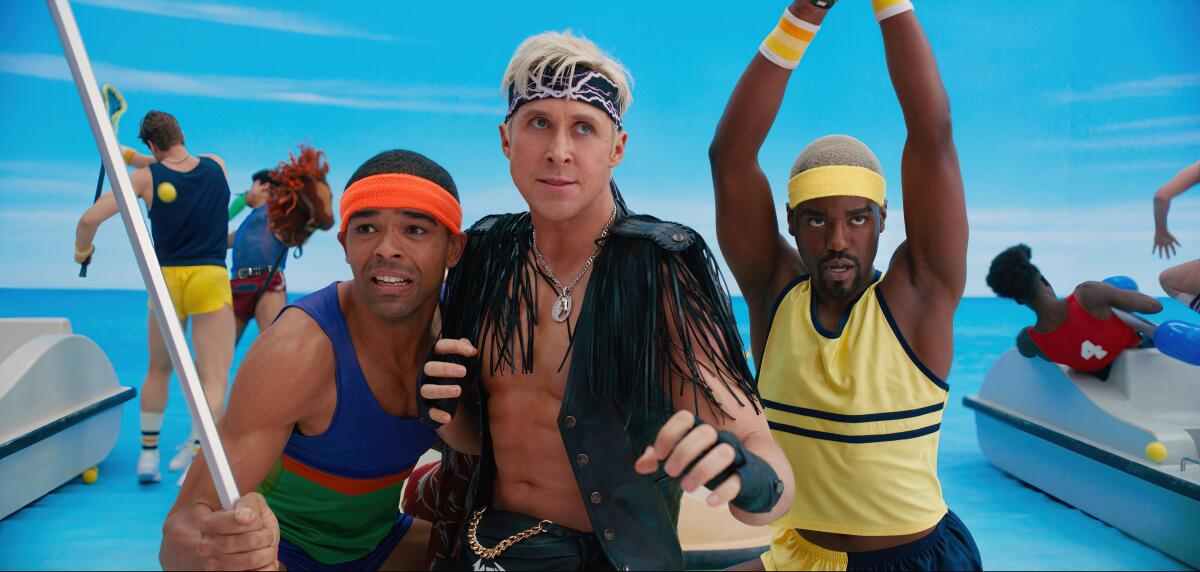
Ryan Gosling, center, and the other Kens take Barbie's Dream House into over-the-top masculine territory.
(Courtesy of Warner Bros. Pictures/Courtesy of Warner Bros. Pictures)
Later in the film, the Kens take over Barbie's Dead End, transforming the Dreamhouses into their own patriarchy-themed Mojo Dojo Casa Houses. Spencer modified the existing sets to reflect the manly elements that Gosling's Ken has brought from the real world, including mini refrigerators and leather furniture.
“The key was talking to Greta and saying, 'Do you really mean this is so ugly?'” Spencer remembers. “And she said, 'Absolutely.' We were bringing these large black leather La-Z-Boy sofas into a harmonious and perfectly balanced world. We had more than 20 televisions playing the same images of galloping horses. It was fun. Ken has seen all these things, like that men's barbecue. So he brings all these barbecues, but he doesn't eat, so he puts plastic food on the barbecue. We did all these books, like 'Noble Steeds for Noble Men.' What was really funny was that about 50% of the crew wanted the Mojo Dojo house stuff after the movie, although I'm not going to say which 50%.”
These small details may not be noticeable at first glance, but the specificity of the world was essential to making it immersive. Vehicles in the film, such as Barbie's car and the pop-up ambulance, were designed by Greenwood and Spencer and built by Picture Vehicles, based at Warner Bros. Studios Leavesden. The same team also built the Batmobile, and Barbie's car now sits in an archive next to Batman's famous ride. There was an entire department dedicated to decals, which were used on cars, accessories and signage. For Ken's fight scene, one crew member hand-created 24 toy horses. The painted backdrop for the boardroom at Mattel's headquarters reveals a modified version of the Los Angeles skyline that you'd have to freeze frame to notice.
“There are nods to 'The Wizard of Oz' throughout the movie: The Pink Brick Road and 'The Wizard of Oz' is playing in the theater,” says Greenwood. “So the painted background, right outside the window, has downtown Los Angeles like the Emerald City, but in gold. There are all these things in there that are like Easter eggs. … What I loved was all this incredible talent across the board doing all these incredible things. That was the beauty of it, therefore, that was the fun. And if it's not fun, why would you want to do it?

